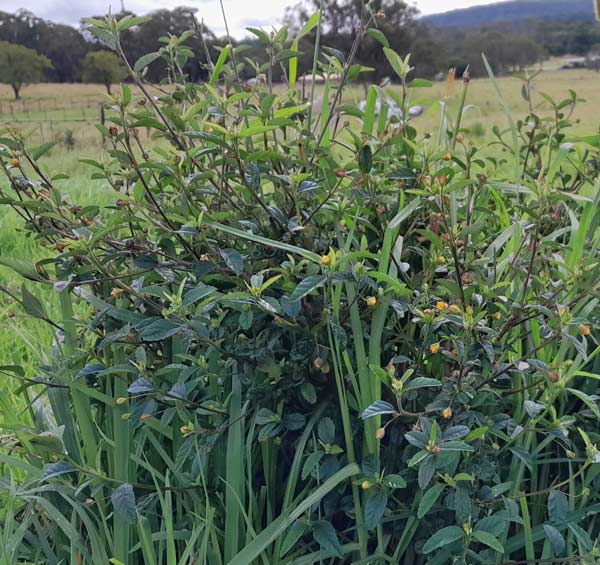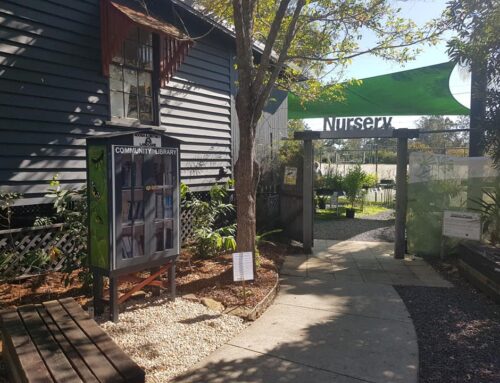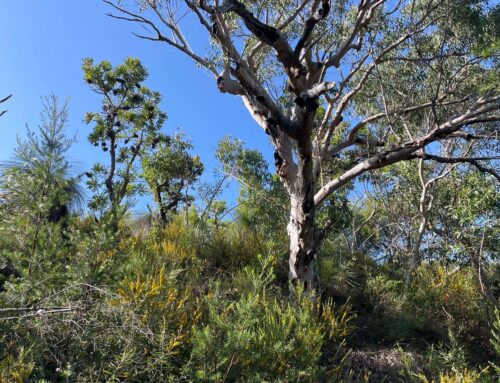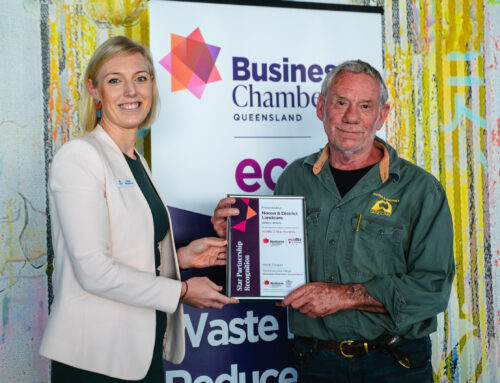Pasture health for grazing production and better water quality
Landholders from the Lake Macdonald and Upper Mary River sub catchments came together last month at a farm near Cooroy Mountain to learn about forage budgeting and explore pasture diversity with Graeme Elphingstone and Brad Wedlock from the Mary River Catchment Coordination Committee (MRCCC) and Ilana Kelly from Noosa Landcare.
It was a great morning in the paddock, with many interesting discussions and enthusiasm from the group! Even so they came back for a follow up session this month to check out winter pasture recovery and revisit the forage budgeting and pasture condition concepts.
Forage budgeting: a useful tool in maintaining healthy pastures
A big focus of the field day was talking about forage budgeting. This is a tool used by graziers to calculate the forage reserves in the paddock at the end of the growing season and identify the safe stocking rates for over winter.
Having this information will allow you to make appropriate management decisions before you get into the low growing season, whether this be destocking or adjusting your rotational frequency and timing, to help you keep your livestock and pastures healthy and ready to power through into the growing season!
To learn more about forage budgeting check out these resources here.
To help you with your forage budgeting and understanding how pastures vary across the landscape, check out this great resource by MRCCC on grazing land types of the Mary River Catchment area here.
Express interest to attend one of our Forage Budgeting workshops here.

Checking out the diversity in the paddock
During the field walk, participants helped identify grasses, legumes and other forbs within the pasture. Together we noted a whopping 35 different species.
Forbs took up a bulk of the species listed. Forbs, by definition, are herbaceous flowering plants, excluding grasses and sedges. Many would consider some of these species as weeds e.g. Cobblers pegs or Sida. Though when you look closely you may notice the cattle do actually eat these species. Why? We aren’t too sure, but we can speculate that they provide some essential mineral or nutrient for the livestock.
So if these forbs aren’t weeds in a pasture, than what is? Well we classify a pasture weed, as a plant that directly impacts sustainable grazing production.
In low numbers, some of the ‘undesirable’ forbs and grasses may not be a problem and instead could be clues of what’s happening in the soil in that location and the grazing or climatic pressures in the pasture. Though if the coverage of these plants spread and becomes dominant, this may impact pasture productivity or the health of your livestock. Thus, becoming a ‘pasture weed’.
Amongst the species listed, were also what we call, 3P grasses and legumes. These are grasses and legumes that are:
- Perennial – Long-lived plants. These can have a greater long-term impact on soil health, carbon flows and pasture production.
- Palatable – High proportion of leaf actively selected by stock. Yummy to your cattle!
- Productive – Produce a large quantity of useful forage. The larger the leaf area of the plant, the bigger the solar panels too! This increases the photosynthetic capacity of the plant and pumps more food and carbon into the soil, if managed appropriately.
Having all 3 desirable traits gives a species the classification of a 3P! The greater diversity and density of 3Ps in the pasture the healthier your pastures and cattle. This farm we visited supported a dense cover of predominately 3P grasses and legumes, which helped the paddock obtain an A condition!
River Care Program
This field day was supported by Seqwater through the Water Supply Catchment Partnership Programs with Mary River Catchment Coordinating Committee (MRCCC) and Noosa Landcare. These two programs are working with landholders in the Lake Macdonald and Kenilworth region to help support land management and healthy waterways in our drinking water catchments.
If you are interested in learning more about these programs visit:
- Lake Macdonald Program: https://noosalandcare.org/projects/water-supply-catchment/
- Upper Mary River: https://mrccc.org.au/projects/upper-mary-rivercare-program/
A huge thank you to the team at Mary River Catchment Coordination Committee for their valuable input and expertise and to all the landholders that have shown interest and attended these field days.

Field day participants in the paddock.

Sida – Sida retusa (or also know S. rhombifolia) with evidence of grazing.

A healthy mix of 3P legumes and grasses in the paddock.




